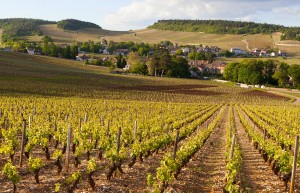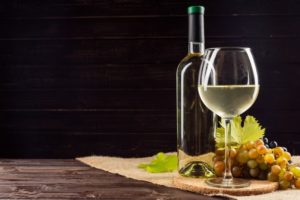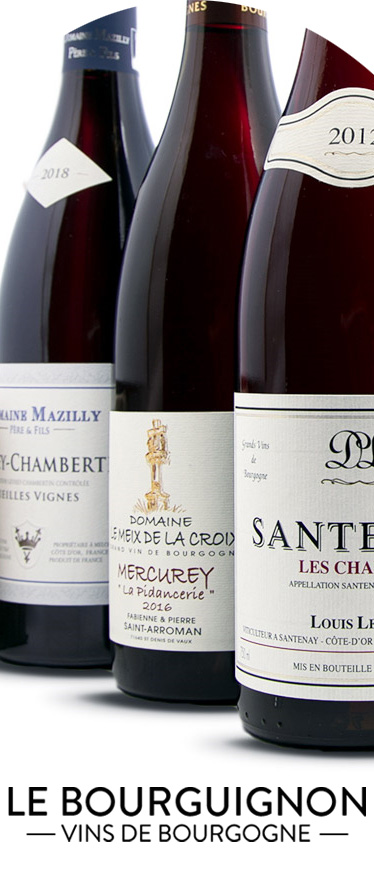According to the BIVB (Bureau Interprofessionnel des Vins de Bourgogne), the northernmost wine region of Burgundy is Chablis, Grand Auxerrois. In the department of Yonne (89), the vineyard of Chablis occupies the slopes bordering the valley of the Serein and the Auxerrois to the south/south-east of the city of Auxerre.
A Burgundy dedicated to the Chardonnay grape variety that finds here the most favorable limestone soils as Chablis shows us. While other vineyards around the Yonne, such as Irancy has bet on red wine and Saint-Bris on Sauvignon.
- Chablis is synonymous worldwide with dry and mineral white wine. His name was usurped as far as California!
Isolated in the middle of the cereal plains of the Yonne (89), the Chablis vineyard hardly resembles the rest of the Burgundy wine landscape. Its name alone federates 4,900 hectares of vines, on this surface 3,630 hectares are dedicated to the Chablis appellation.
- To the north-west of Chablis, three rivers (the Yonne, the Serein and the Armançon) merge into one, the Yonne. Going up the course of each, we walk along the vineyards of Auxerrois. Only in burgundyregional ppellation with the possibility of adding the name of the village on the label.
Irancy and Saint-Bris, located east of Auxerre, are the last two small of the communal Burgundy appellations. They show that Pinot Noir and Sauvignon are doing well in northern Burgundy.
In Burgundy, it is the parcels of vines that are delimited into appellation areas. It is therefore a geographical principle that dominates first. Thus, over time, a classification by geographical origin has been created on "3 levels" of the AOC (Appellation d'Origine Contrôlée).
- Regional appellations (red Burgundies, white Burgundies, Burgundy Côte d'Auxerre…)
- Petit Chablis and Chablis, appellations villages and Chablis Premier Cru, appellation village Premier Cru
- Chablis Grand Cru, the third level of appellation (Blanchot, Bougros, Les Clos, Grenouilles, Preuses, Valmur and Vaudésir)
The terroir

- Chablisien is the "golden door of Burgundy", chardonnay is cultivated, the white grape variety preferred throughout Burgundy, locally called "Beaunois". The Chablis vineyard now occupies stony, marly and calcareous soils. It is located on two types of basement: the Tithonian (the former Portlandian) and the Kimmeridgian, conducive to the delicate expression of Chardonnay.
The limestone of the Tithonian corresponds to a soil that is not very calcareous, marly and does not contain fossils. It produces wines with more fruity characteristics and have little minerality.
Kimmeridgian marl has very compact limestone layers as well as clay marls containing in abundance fossilized marine organisms, in this case tiny oysters (exogyra virgula).These marine sediments brought by the sea 150 million years ago give us the typicity of Chablis wines.
- Irancy, 10 km southeast of Auxerre, surrounded by vineyard hillsides. The suitable soils are obviously "limestone", but to ripen the Pinot Noir at this latitude, they are exposed to the south, not too high and well draining, so stony rather than marly.
- In Saint-Bris, the Sauvignon grape variety is planted in the north while the slopes of Chardonnay and Pinot Noir are exposed to the south and east. Winemakers appreciate the Tithonian, since it gives the Sauvignon this minerality (very flint) and the Kimmeridgian allows the Sauvignon grape variety to be more acidic and gives more structure. The blend of the two then provides a pleasant wine, greedy in its youth.
Tasting
- A good Chablis offers a pale gold color, adorned with green reflections. Its nose is open even young, and evokes mineral notes (gun stone, flint, wet pebble) that make its reputation, rather than floral. He should not smell in his youth honey, but flint, green apple, lemon. With age, more honeyed and spicy notes appear, accompanied by nuances of undergrowth and mushroom. On the palate, Chablis is dry, lively, even acidic in rainy years, but of great finesse, and it offers a certain volume in the finish. The wine can be allowed to age for 3 or 4 years, so that it is more complex and richer.
Jancis Robinson, is the most famous wine critic in the world, according to her "Chablis remains one of the greatest white wines in the world." So trust him!
- The particularity of Irancy wine is to include optionally (up to 10%) Caesar, a traditional grape variety in Irancy. Most of the time, it is a wine made from a single grape variety , Pinot Noir. This wine offers a dark color, a bouquet of black fruits (blackcurrant, blackberry,…) where sometimes come floral and liquorice or peppery scents. In the mouth the tannins blend with a beautiful structure. Very nice keeping capacity for 3 to 12 years.
- The Saint-Bris is a white, a sauvignon. The eye is often pale yellow, light gold. The wine offers notes of citrus (grapefruit, mandarin), peach and blackcurrant leaves. On the palate a spicy and iodine finish is present. To be enjoyed in his youth or after a few years.



